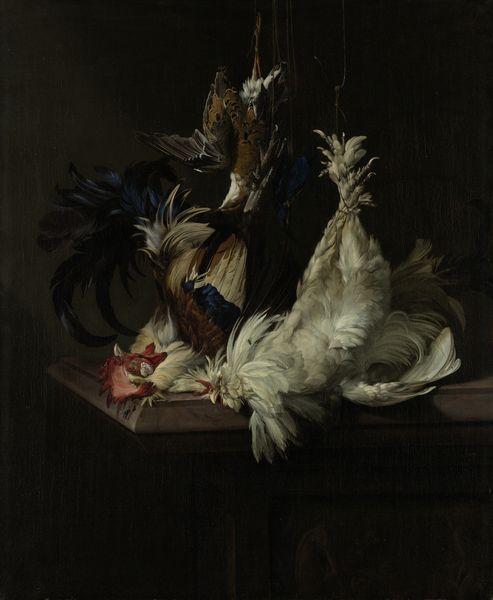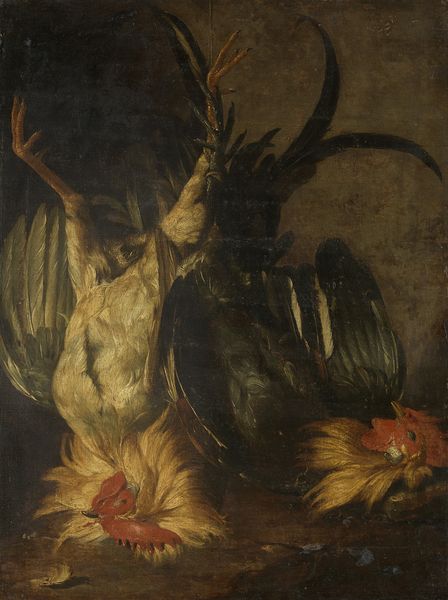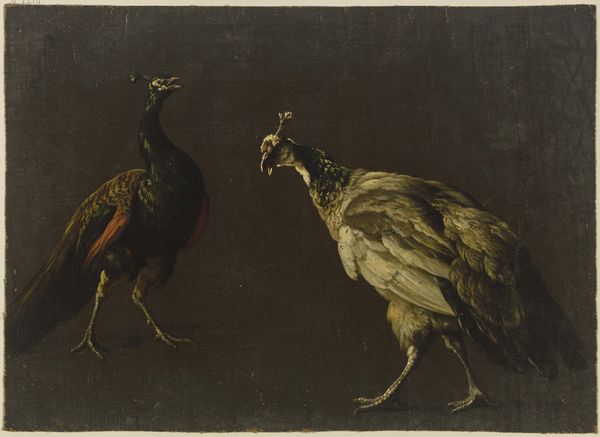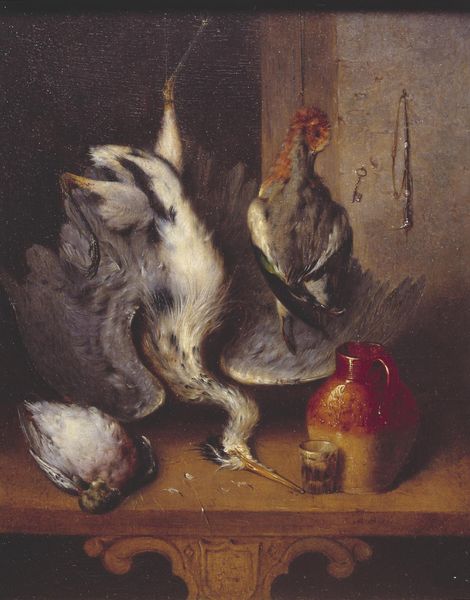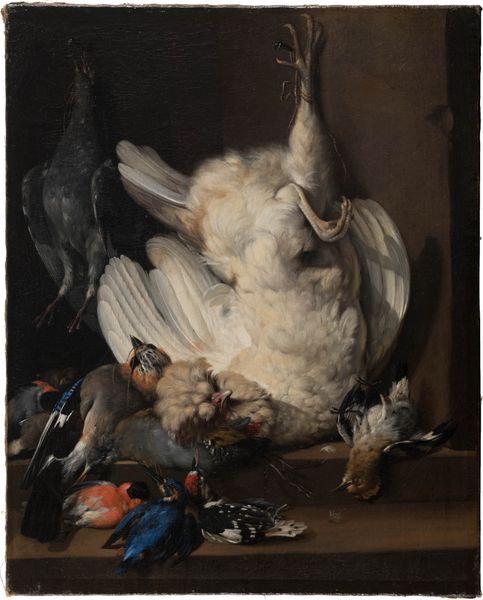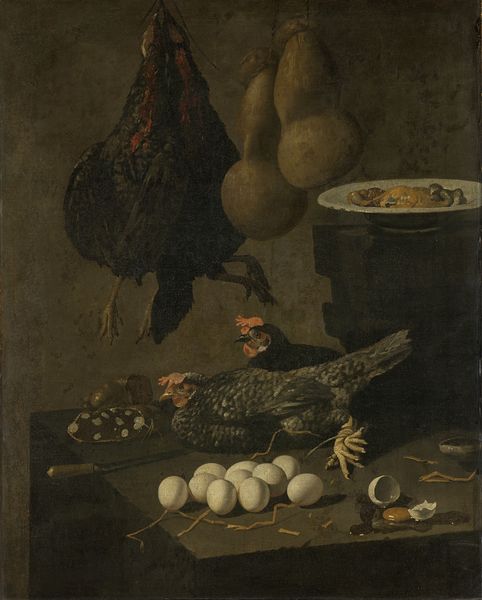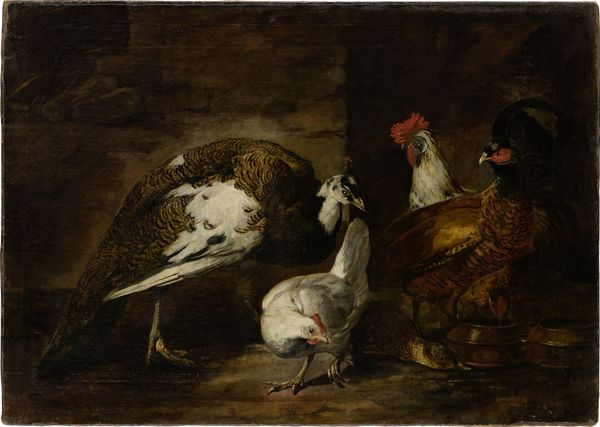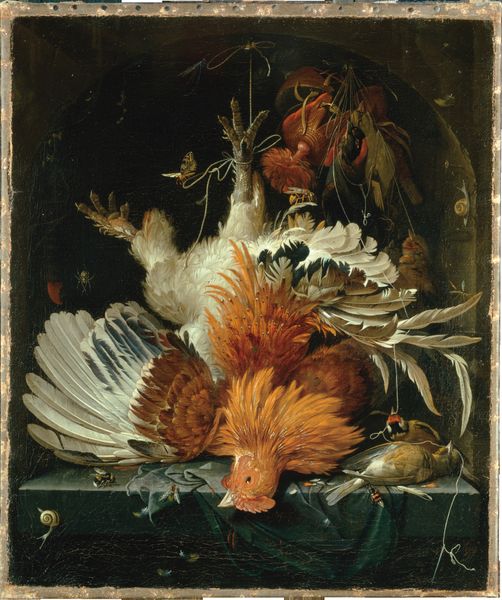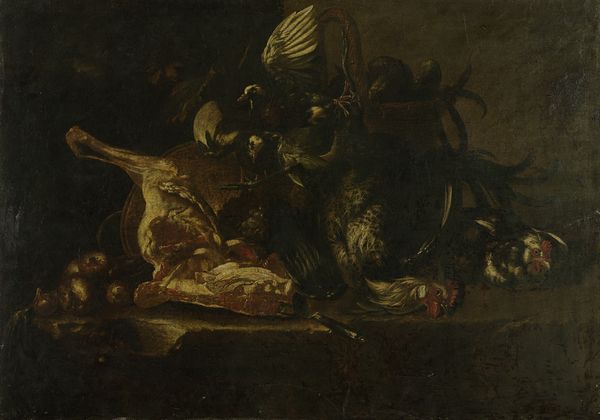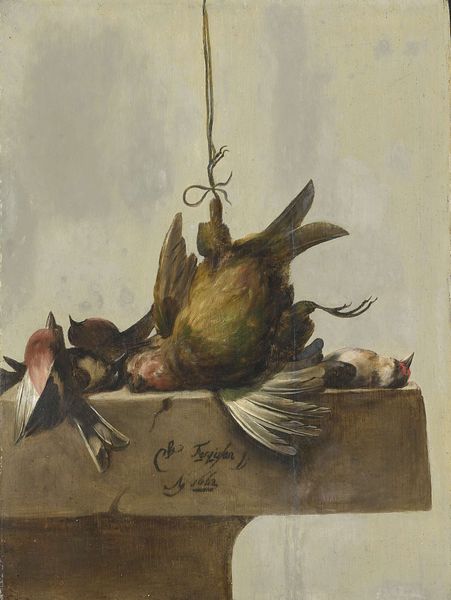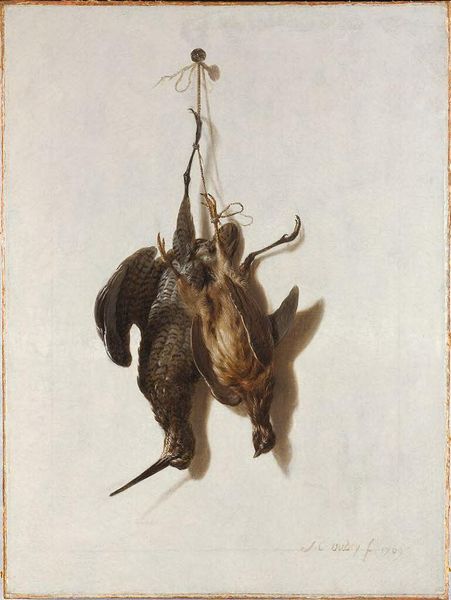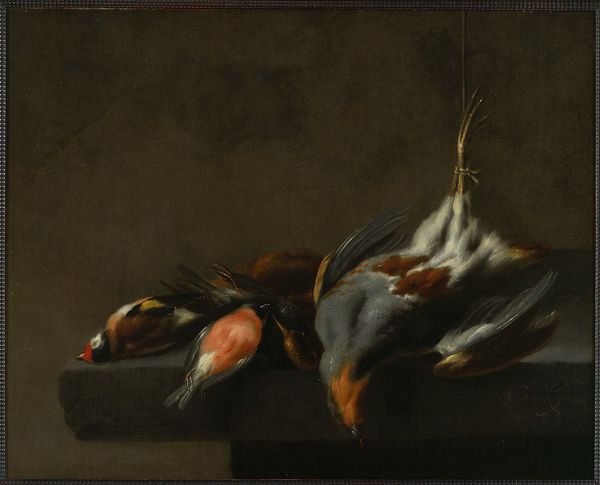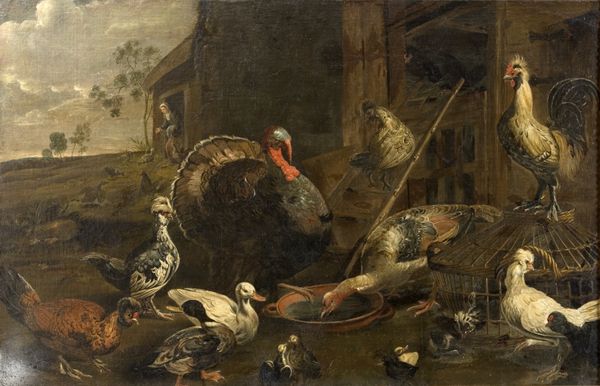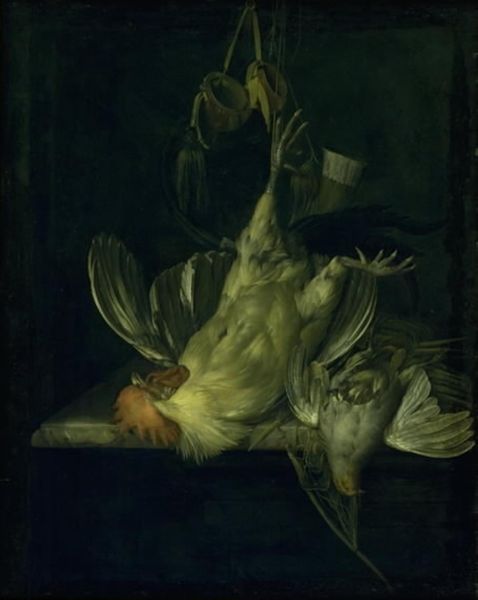
oil-paint
#
baroque
#
dutch-golden-age
#
oil-paint
#
oil painting
#
genre-painting
#
realism
Dimensions: height 93.8 cm, width 84 cm, thickness 3.8 cm, depth 7.8 cm
Copyright: Rijks Museum: Open Domain
Editor: Cornelis Lelienbergh's "Still Life with Black Rooster and two Rabbits" from 1659 is quite a striking image. It definitely feels a bit stark and unsettling to me, given the… direct depiction of dead animals. What’s your take on a painting like this, considering its time period? Curator: Well, from a historical perspective, paintings like this served several roles in 17th-century Dutch society. The Dutch Golden Age was booming economically, but it was also deeply Calvinistic. Do you see any potential tension there? Editor: I suppose… displays of wealth could be seen as frowned upon? Curator: Exactly! Ostentatious displays were often considered inappropriate. But, there was still a burgeoning market for art. A still life like this could be a coded way of depicting wealth and abundance. It also spoke to human dominion over nature, which was a prevailing worldview at the time. Furthermore, the level of realism – how does that strike you? Editor: It’s incredibly detailed. You can almost feel the texture of the feathers and fur. Curator: Precisely. The artist's skill demonstrated mastery, which patrons valued. However, let's also consider the role of public display: Where might a painting like this have been seen? Who were the intended viewers and what messages might they have decoded beyond the simple representation of dead animals? Editor: Perhaps displayed in a wealthy merchant's home as a way to signal prosperity without being too showy? Curator: That’s a very astute interpretation. It's not just about the artist's skill or the subject matter itself, but how these pieces function within specific social contexts. Understanding the intended audience truly enriches the interpretation. Editor: So, it’s more than just what’s on the surface, but understanding how art interacts with the culture that produced it. I will keep this in mind. Thanks!
Comments
No comments
Be the first to comment and join the conversation on the ultimate creative platform.
